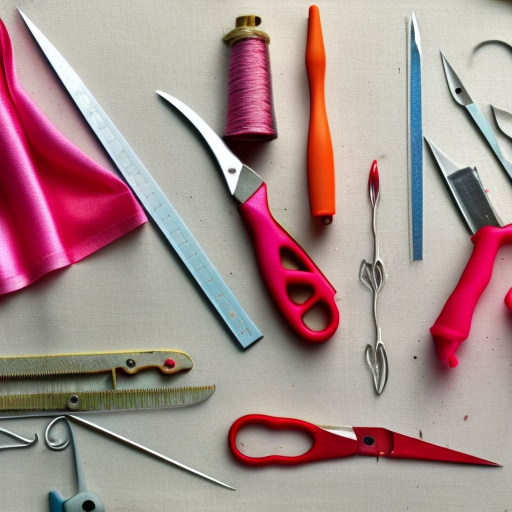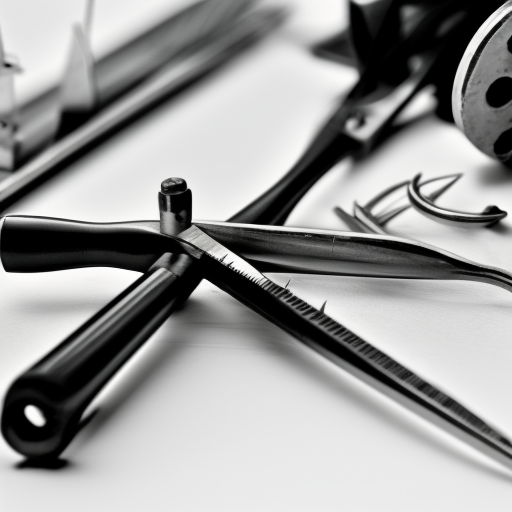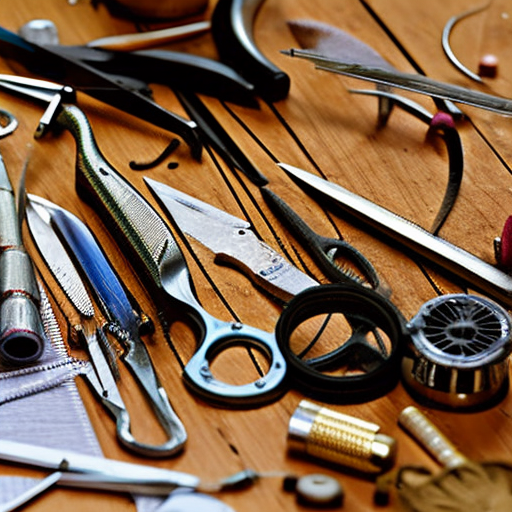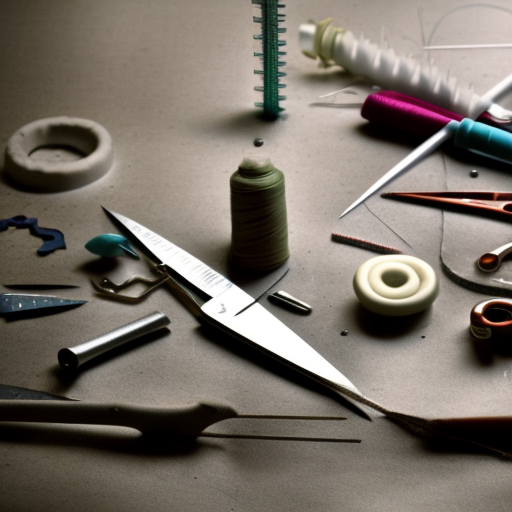Sewing has been a popular craft for centuries, with its origins dating back to ancient times. From creating garments to artistic creations, sewing is a versatile skill that allows for endless creativity. But beyond just talent and technique, having the right sewing materials is crucial to achieve the best results. In this article, we will explore the top sewing materials that can help you craft wonders with your needle and thread.
Fabric
When it comes to sewing, the fabric is the most essential material that determines the outcome of your project. There is a wide variety of fabrics available in the market, each with its unique properties and characteristics. Some of the common fabrics used for sewing include cotton, silk, linen, wool, and denim. Depending on your project, you can choose the appropriate fabric in terms of weight, color, texture, and durability. For instance, if you’re sewing a summer dress, lightweight fabrics like cotton or linen would be the ideal choice, while a coat would require a heavier fabric like wool.
Thread
Thread is what holds your fabric pieces together, making it another crucial material for sewing. It comes in different weights and types such as cotton, silk, polyester, and nylon. When choosing a thread, it is essential to match it with the type of fabric you’re using. For instance, cotton thread is best for natural fabrics like cotton, linen, and rayon, while polyester thread is more suitable for synthetic fabrics like polyester and nylon. Moreover, the weight of the thread should also be considered depending on the thickness of your fabric. Using a thick thread on lightweight fabric can result in bulky seams and may affect the drape and overall look of your project.
Needles
Needles may seem like a small and insignificant sewing material, but they are crucial for achieving precise and professional-looking stitches. There are different types of needles available, each designed for specific fabrics and purposes. The common types of needles used in sewing are universal, ballpoint, sharp, and denim needles. Choosing the right needle can make a significant difference in your sewing experience and the final outcome of your project. For example, sharp needles are best for woven fabrics like cotton and linen, while ballpoint needles are more suitable for knit fabrics like jerseys and stretchy materials.
Measuring Tools
Accuracy is key in sewing, and that’s why having the right measuring tools is essential. Among the most common measuring tools used in sewing are a tape measure, sewing gauge, and ruler. A tape measure is ideal for taking body measurements and measuring the fabric, while a sewing gauge is useful for marking hems and seam allowances. A ruler can also come in handy for precise measurements and straight edges. Using measuring tools ensures that your sewing projects turn out perfectly and fit the intended individual perfectly.
Cutting Tools
Cutting tools are essential in sewing as they determine the shape and size of fabric pieces. The two most common cutting tools used are scissors and rotary cutters. Scissors can be used for cutting small or curved fabric pieces, while a rotary cutter is ideal for larger and straight cuts. It is crucial to use sharp and high-quality cutting tools to achieve clean and precise cuts without damaging the fabric.
Pins and Pin Cushion
Pins are used to hold fabric pieces together before sewing. They come in different lengths and thickness, and the type of pin used will depend on the fabric being sewn. For instance, fine pins are best for lightweight and delicate fabrics, while thicker pins are suitable for heavier and denser fabrics. A pin cushion is a small cushion or container used to store pins when not in use, making it easier to keep track of them and avoiding accidents.
Other sewing materials that are worth mentioning include marking tools such as chalk or fabric pens, iron and ironing board for pressing seams and hems, and a sewing machine for faster and more complex projects. With the right sewing materials, not only will you enjoy sewing more, but you’ll also achieve impressive and high-quality results.
In conclusion, sewing can be a therapeutic and fulfilling hobby, and having the right materials can take your projects to the next level. Whether you’re a beginner or an experienced sewist, investing in high-quality and suitable sewing materials is essential for crafting wonders with your needle and thread. So, next time you embark on a sewing project, make sure to have these top sewing materials on hand for a smooth and successful sewing journey.





Big fan of sewing – so excited to learn about new materials!
Rachel Walker: I’ve been wanting to learn about sewing for a while – so looking forward to exploring these materials!
Joy Lee: This looks very interesting! Can’t wait to read up and see what the best materials are for sewing!
This is a great opportunity to uncover amazing resources and materials for sewing projects! Exciting to explore what the top materials are for creating beautiful and unique pieces.
Definitely intrigued to see what materials are being utilized for sewing – what a great way to expand my crafting knowledge!